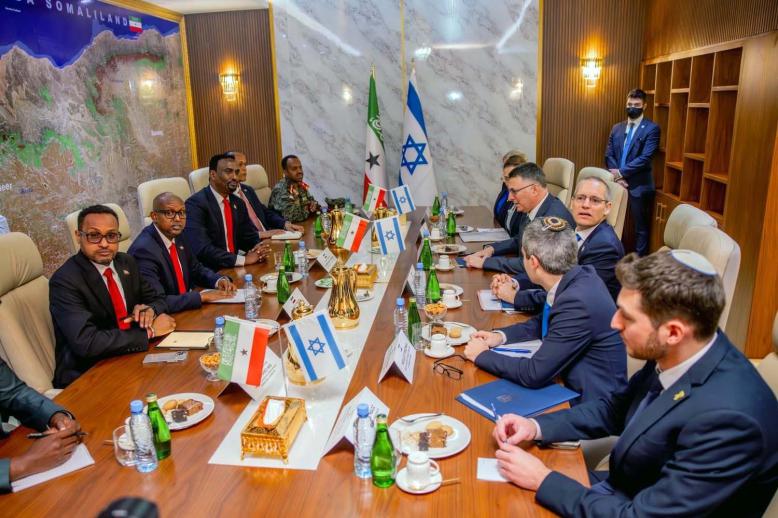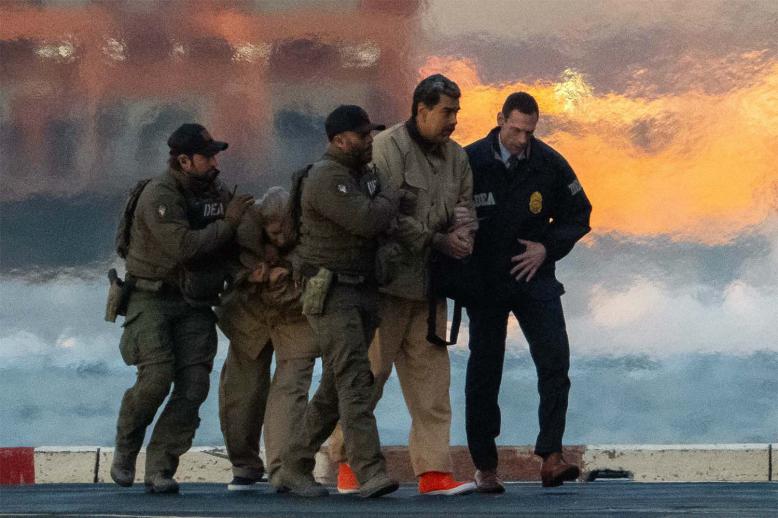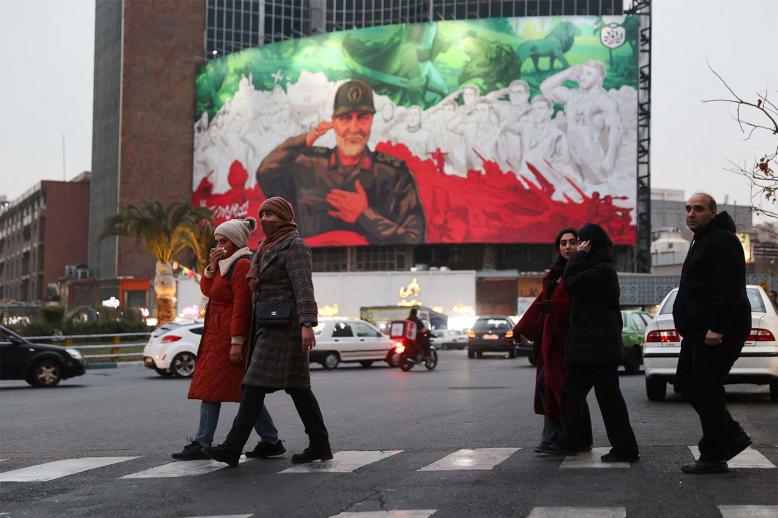For Palestinians, it is going to be either stalemate or ‘Deal of the Century’
What can be learned from the results of the Israeli elections and Binyamin Netanyahu’s return for another term as prime minister is that the stalemate in the peace process in the Middle East is going to last a long time unless the Trump administration really proposes a “Deal of the Century.”
A “Deal of the Century” means, among other things, going beyond the concepts that led to the peace process at the Madrid Conference in 1991 on the basis of the principle of land for peace and international resolutions, particularly UN Security Council Resolution 242 issued in November 1967, immediately after the Six-Day War.
In the next phase, the choice is going to be between the “Deal of the Century” and a stalemate. Of this deal, we know practically nothing. What we do know is that the United States has recognised all of Jerusalem as the capital of Israel and has given its blessings to Israel to annex the Golan Heights.
These moves by the Trump administration are a clear expression of its unambiguous intentions to change the map of the region. International law has determined that East Jerusalem and the Golan Heights are occupied territories. So, will the “Deal of the Century” require changes in other maps to settle the Palestinian question at the expense of the two-state solution?
It can’t help but be noticed that, since the Madrid Conference, Israel has veered off the path set by the conference and returned to Netanyahu’s long-standing ideas.
Netanyahu was the spokesman of the Israeli delegation at the Madrid Conference while Yitzhak Shamir was both prime minister and foreign minister. US President George H.W. Bush and US Secretary of State James Baker put tremendous pressure on the Israeli government and forced Shamir to participate in the Madrid Conference, organised on the principle of “land for peace.”
Shamir, however, had always believed in land first, not in peace and so had Netanyahu. When Shamir was asked about the possible outcomes of the Madrid Conference, the Israeli prime minister replied with total impudence: “We’ll waste 10 years in endless negotiations while continuing to expand settlement construction.”
This is what Netanyahu, too, had wanted to do. He is creating a fait accompli through settlements and by annexing a section of the West Bank. This is what he talked about during his campaign. In fact, what he talked about was to annex the whole of the West Bank. He, however, has not bothered to say what he was going to do with the Palestinians of the West Bank.
What solution can he come up with that would dissolve the Palestinians as long as Jordan rejects any option other than the two-state solution and insists that East Jerusalem, with its Christian and Islamic holy sites, be placed under its guardianship?
What about the Gaza Strip? Is it true that solutions are going to be suggested within the framework of expanding the area of the Gaza Strip in the direction of Sinai with Egyptian consent and under US auspices?
The next stage is going to be quite complex. This being so, it doesn’t follow that we should not face the new realities that were created on the ground after the Madrid Conference.
Only Jordan, under the leadership of the late King Hussein, understood what had been going on in the region, way before the Madrid Conference. King Hussein took a decision to disengage from the West Bank in July 1988 and paved the way for parliamentary elections confined to the East Bank.
Following the signing of the Oslo Accords on the White House lawn and the historic handshake between Yasser Arafat and Yitzhak Rabin in September 1993, the Palestinians should have kept the momentum and pressed on for a final settlement, even if it was unfair, to establish a Palestinian entity that includes the West Bank and Gaza.
It would have been better if Arafat had taken advantage of the presence of Rabin as prime minister and of the Jordanian-Israeli peace agreement signed in Wadi Araba in October 1994 but none of that had happened.
The Israeli side, including Ehud Barak in 2000, has never put forth a formula for a settlement that would be agreeable to the Palestinians or even match their minimum aspirations. What was discovered instead after the recent elections is that there is a different Israel altogether with a permanent desire to create a fait accompli, a policy that Shamir and Netanyahu have bet on since the Madrid Conference.
Through the years, Israel has taken advantage of several factors that shifted Israeli society more to the right. Among the factors were suicide attacks carried out by Hamas, especially in the post-Oslo period, and the Iranian threat, which was based on stirring sectarian instincts.
Most Arab regimes also understood that Iran’s expansionist project posed a direct threat to them and the region. The Iranian threat has grown with the American occupation of Iraq and the establishment of a regime in Baghdad based on sectarian quotas. Naturally, these developments placed the Palestinian cause at the bottom of the Arab agenda, despite all the speeches heard at Arab summits.
In the end, Iraq fell, Syria was fragmented, Lebanon almost collapsed and Iran expanded to Yemen and became a threat to the Gulf states.
Netanyahu’s return to the Israeli premiership, with the blessings of Donald Trump and Vladimir Putin, is nothing but the expression of a new phase in the Middle East and the Arab region. Sooner or later, the Arabs will have to choose between the stalemate that Netanyahu adores and the “Deal of the Century,” if there is such a thing.
There are new realities in the region and the world that force us to think differently. We must have courage and recognise that the Israel we were familiar with in the past no longer exists. There is no Israeli interest in peace or the peace process while the Arab Orient is in a state of birth labour.
Despite the absence of a Palestinian leadership capable of meeting the current challenges and changes, there remain crucial questions: What to do with the Palestinian people? Is it possible to just wipe out a whole people from Palestine?
What Netanyahu cannot understand is that time can play in favour of Israel for now but it can just as easily play against it in the long run, especially when a settlement that guarantees even the minimum of Palestinian national rights and a measure of justice is missing.
What can be learned from the results of the Israeli elections and Binyamin Netanyahu’s return for another term as prime minister is that the stalemate in the peace process in the Middle East is going to last a long time unless the Trump administration really proposes a “Deal of the Century.”
A “Deal of the Century” means, among other things, going beyond the concepts that led to the peace process at the Madrid Conference in 1991 on the basis of the principle of land for peace and international resolutions, particularly UN Security Council Resolution 242 issued in November 1967, immediately after the Six-Day War.
In the next phase, the choice is going to be between the “Deal of the Century” and a stalemate. Of this deal, we know practically nothing. What we do know is that the United States has recognised all of Jerusalem as the capital of Israel and has given its blessings to Israel to annex the Golan Heights.
These moves by the Trump administration are a clear expression of its unambiguous intentions to change the map of the region. International law has determined that East Jerusalem and the Golan Heights are occupied territories. So, will the “Deal of the Century” require changes in other maps to settle the Palestinian question at the expense of the two-state solution?
It can’t help but be noticed that, since the Madrid Conference, Israel has veered off the path set by the conference and returned to Netanyahu’s long-standing ideas.
Netanyahu was the spokesman of the Israeli delegation at the Madrid Conference while Yitzhak Shamir was both prime minister and foreign minister. US President George H.W. Bush and US Secretary of State James Baker put tremendous pressure on the Israeli government and forced Shamir to participate in the Madrid Conference, organised on the principle of “land for peace.”
Shamir, however, had always believed in land first, not in peace and so had Netanyahu. When Shamir was asked about the possible outcomes of the Madrid Conference, the Israeli prime minister replied with total impudence: “We’ll waste 10 years in endless negotiations while continuing to expand settlement construction.”
This is what Netanyahu, too, had wanted to do. He is creating a fait accompli through settlements and by annexing a section of the West Bank. This is what he talked about during his campaign. In fact, what he talked about was to annex the whole of the West Bank. He, however, has not bothered to say what he was going to do with the Palestinians of the West Bank.
What solution can he come up with that would dissolve the Palestinians as long as Jordan rejects any option other than the two-state solution and insists that East Jerusalem, with its Christian and Islamic holy sites, be placed under its guardianship?
What about the Gaza Strip? Is it true that solutions are going to be suggested within the framework of expanding the area of the Gaza Strip in the direction of Sinai with Egyptian consent and under US auspices?
The next stage is going to be quite complex. This being so, it doesn’t follow that we should not face the new realities that were created on the ground after the Madrid Conference.
Only Jordan, under the leadership of the late King Hussein, understood what had been going on in the region, way before the Madrid Conference. King Hussein took a decision to disengage from the West Bank in July 1988 and paved the way for parliamentary elections confined to the East Bank.
Following the signing of the Oslo Accords on the White House lawn and the historic handshake between Yasser Arafat and Yitzhak Rabin in September 1993, the Palestinians should have kept the momentum and pressed on for a final settlement, even if it was unfair, to establish a Palestinian entity that includes the West Bank and Gaza.
It would have been better if Arafat had taken advantage of the presence of Rabin as prime minister and of the Jordanian-Israeli peace agreement signed in Wadi Araba in October 1994 but none of that had happened.
The Israeli side, including Ehud Barak in 2000, has never put forth a formula for a settlement that would be agreeable to the Palestinians or even match their minimum aspirations. What was discovered instead after the recent elections is that there is a different Israel altogether with a permanent desire to create a fait accompli, a policy that Shamir and Netanyahu have bet on since the Madrid Conference.
Through the years, Israel has taken advantage of several factors that shifted Israeli society more to the right. Among the factors were suicide attacks carried out by Hamas, especially in the post-Oslo period, and the Iranian threat, which was based on stirring sectarian instincts.
Most Arab regimes also understood that Iran’s expansionist project posed a direct threat to them and the region. The Iranian threat has grown with the American occupation of Iraq and the establishment of a regime in Baghdad based on sectarian quotas. Naturally, these developments placed the Palestinian cause at the bottom of the Arab agenda, despite all the speeches heard at Arab summits.
In the end, Iraq fell, Syria was fragmented, Lebanon almost collapsed and Iran expanded to Yemen and became a threat to the Gulf states.
Netanyahu’s return to the Israeli premiership, with the blessings of Donald Trump and Vladimir Putin, is nothing but the expression of a new phase in the Middle East and the Arab region. Sooner or later, the Arabs will have to choose between the stalemate that Netanyahu adores and the “Deal of the Century,” if there is such a thing.
There are new realities in the region and the world that force us to think differently. We must have courage and recognise that the Israel we were familiar with in the past no longer exists. There is no Israeli interest in peace or the peace process while the Arab Orient is in a state of birth labour.
Despite the absence of a Palestinian leadership capable of meeting the current challenges and changes, there remain crucial questions: What to do with the Palestinian people? Is it possible to just wipe out a whole people from Palestine?
What Netanyahu cannot understand is that time can play in favour of Israel for now but it can just as easily play against it in the long run, especially when a settlement that guarantees even the minimum of Palestinian national rights and a measure of justice is missing.
Khairallah Khairallah is a Lebanese writer.
This article was originally published in The Arab Weekly.







